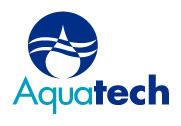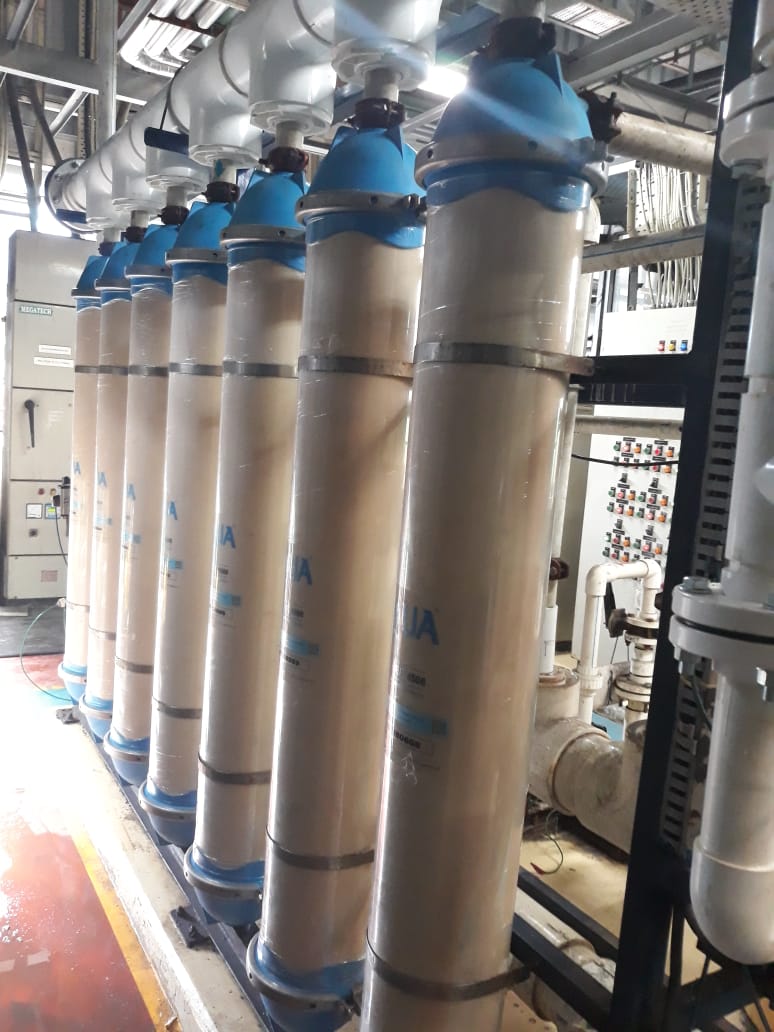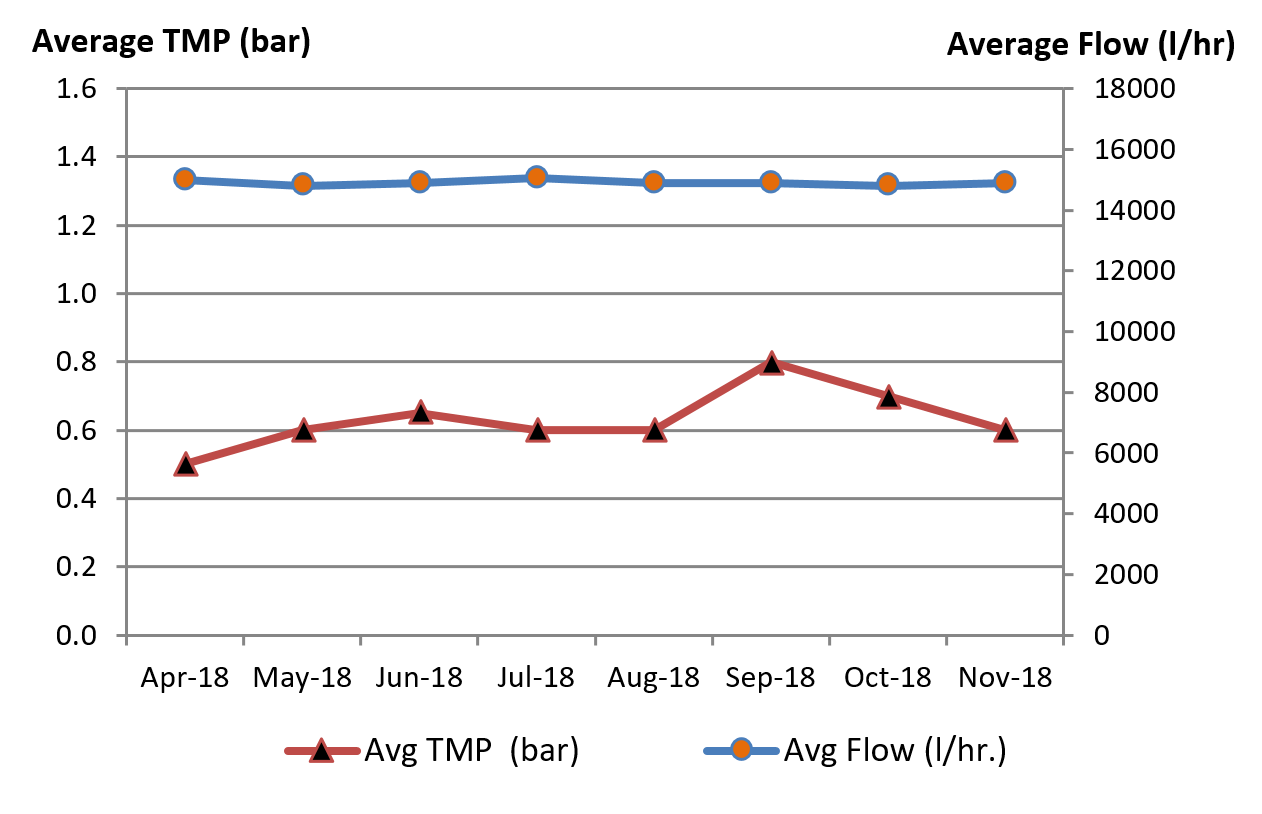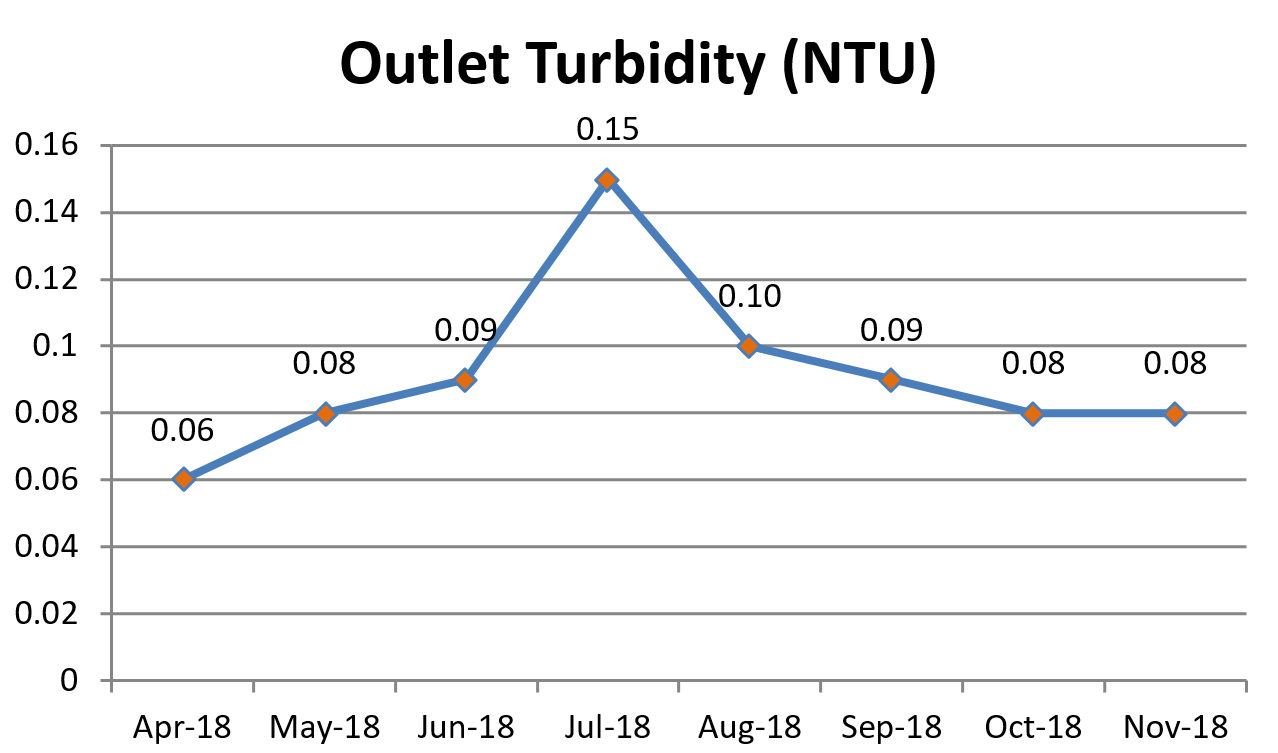The UF system, in pretreatment for the RO system, is required to provide consistent product water with low silt density index (SDI). The primary goal of RO pretreatment is to reduce SDI and turbidity of the water feeding the RO, to minimize cleaning and safeguard the RO membranes from fouling.
The feed to the UF system is filtered water from media filter units, and the UF will remove any residual suspended solids, colloidal matter and high molecular weight organics in the feed water, to achieve low and consistent SDI required for reliable and trouble free RO operation.
The feed water to the UF plant in this ETP is tertiary treated effluent after the media filtration units The unit operates at 15 m3/hr permeate flow, with a crossflow of 2.0 M3/hr. Initially, the UF plant was configured with another manufacturer’s inside/out PES membranes with a surface area of 46 m2. Though the plant had been running for the past year, the UF membranes were not able to perform due to challenging feed parameters. This resulted in a faster than expected rise in transmembrane pressure (TMP). The membranes began fouling quickly and frequent chemical cleaning (CIP) was required for the UF and RO systems. By the start of 2018 the turbidity was literally off the charts. The membranes were unable to adequately pretreat the water and meet the expected performance criteria, and required replacement.
“We went in for a retrofit of existing UF due to off the shelf availability of QUA membranes and their technical support. But what we got in return was net savings, in addition to consistent permeate quality. This finally paved the way for QUA membranes for our future projects”…. S. Anand, Director, AquaMatrix
Q-SEP Model: Q-SEP 4508
Total Q-SEP Membranes: 7
Permeate Flow: 15m3/hr
Application: Automotive component plant effluent treatment
QUA Solution
The client decided to correct the pretreatment system, and explore other UF membranes for replacement. Here, the challenging part was that UF membranes are not interchangeable like RO membranes, as each has different dimensions, port size and orientation. Due to this the entire skid would require modification, like pipework modification, change in common header elevations, changes in structural and supports etc, which would entail additional costs. In this case, delivery time was also critical as the client’s production was hindered and they required immediate delivery.
The OEM involved in this project approached QUA, who was able to provide a reliable solution and resolve the client’s concerns. QUA’s Q-SEP 4508 was able to address the client’s major concern of interchangeability, due to its dimensions being quite similar to the existing UF model. Also, Q-SEP has been proven for its consistent and reliable operation because of its low fouling characteristics, uniform pore size distribution and large surface area. Since QUA’s manufacturing facility was in India, the client was assured of delivery within a week’s time, to fulfil their urgent requirement.
The Q-SEP 4508 model was able to replace the existing UF without any hassle and without incurring heavy costs. Q-SEP was longer than the current UF modules by 72mm and thus required header replacement. However, instead of replacing the entire header, only the top permeate header was elevated to suit the height requirement. This was simple and the client was able to save on the costs which they would have incurred otherwise for replacement of UF. Thus, with Q-SEP, the saving for the client has been on two counts; one, they were able to avoid CIP downtime cost as Q-SEP were delivered immediately, and two, they have saved on capex on account of Q-SEP being almost 40% lower in cost as compared to the other manufacturer’s membranes.
The replaced Q-SEP membranes have been working for the past 6 months with a cross flow rate of 2.0 m3/hr, and the system is able to provide a consistent permeate output of 15m3/hr. The TMP is consistently between 0.5 – 0.8 bar, and SDI at the outlet of Q-SEP is less than 2, 100% of the time.




